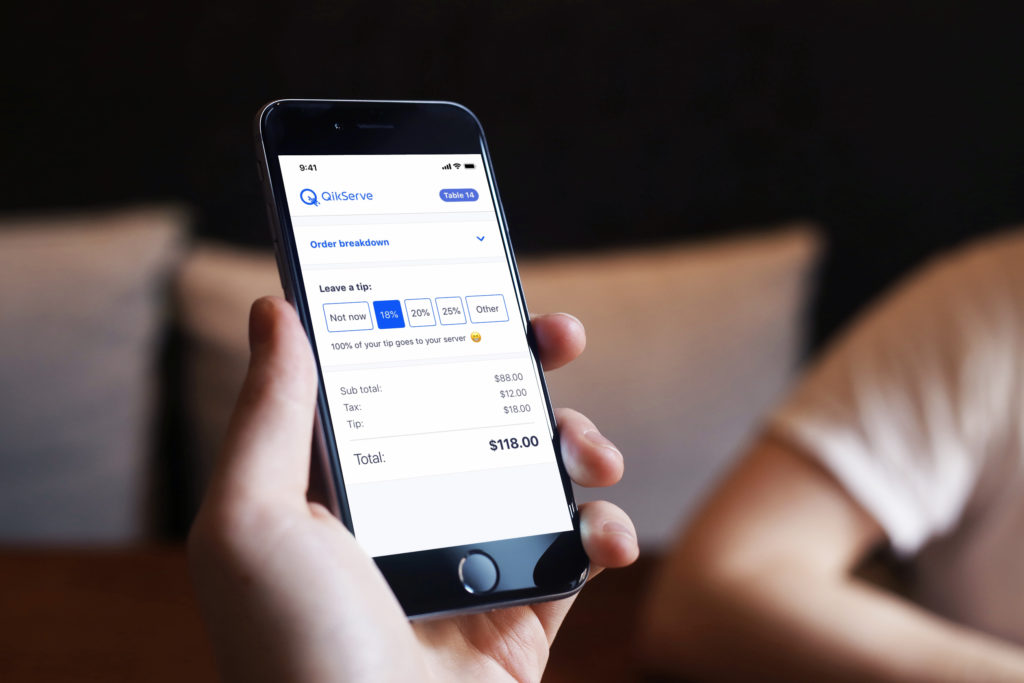14 guest motivations for tipping in a restaurant and how to use them to ensure your payment interface is primed to receive gratuities
When it comes to the reasons why we tip in restaurants and why some guests tip more others, there’s a lot more at play than you would think.
Interestingly, the drivers that motivate guests to tip more tend to be largely attributed to mood, sense of obligation and psychology, and less so to do with actual service.
With that said, there’s a lot you can do the design of your digital payment interface to increase the likelihood that your staff will be recognized for the hard work they put in.
Here’s our 14 facts you didn’t know you needed to know about restaurant tipping – and how you can embed them into the design and build of your digital payment interface to ensure your staff walk away feeling motivated and with fuller wallets.
- As alluded to above, average tipping percentages are only very weakly linked with the quality of service overall. More often people tip out of a sense of obligation according to service industry researcher and expert Michael Lynn.
- The color gold can increase the amount you tip. Yep. According to studies, mere exposure to the color gold makes guests feel like they’re in a restaurant that caters to a high-status people. And when people feel wealthier, they are more inclined to flaunt their wealth.
- Recommending a higher tip amount means fewer people leave a tip but those who do tip will tip more and overall servers will come home with more money.
- Millenials are the worst group for tipping. One in 6 millenials regularly choose the lowest tip option and nearly one in 5 gives no tip at all.
- People more comfortable with hierarchies are more likely to tip; this has been suggested as linked to power disparities and the perception that the guest has power over the server.
- Behaviors that foster feelings of social connection tend to drive tips up. Servers who introduce themselves to guests; squat to be at eye level with customers; briefly touch guests on the shoulder; compliment food choices; draw a smiley face on the check or deliver mints with the check, tend to accrue higher tips, according to research from Cornell University.
- Repeating the order back to guests increases tip sizes by up to 70%. Apparently, exactly matching words strengthens the guest/server bond and increases the belief that the order will be sent to the kitchen correctly.
- Researcher David Strohmetz found that servers who placed a candy alongside the bill typically increased their tips by 3% and those that left two candies typically increased it by 14.1%. However, if the server left a single candy then returned later with a second candy and said: “for you nice people here’s an extra candy”—the unexpectedness of the extra ‘gift’ led to a 21% increase in tips. Making your guest feel special and like a VIP customer may hold the key to seeing an increase in your tip jar.
- Diners will tip up to 25% more if the tip tray has the logo of a reputable credit card company embossed on it.
- Hearts and symbols that represent love or positive emotions may make guests feel appreciated and as a result may tip more. In one study, when diners received their check on a heart-shaped plate the amount of tip they left was 17% higher than if the check came on a round plate, and 15% higher than if it came on a square plate.
- As opposed to the traditional tip jar method, having a ‘no tip’ button on a payment interface exploits a sense of guilt that the guest may not have otherwise felt and makes them more likely to leave a tip. All the more reason to push digital payments.
- When presented with a list of tip options, most people will pick the middle number. This is also known as the “compromise effect”.
- Using a strategic tipping system that uses a formula where any item priced below a certain threshold switches from percentages to dollar amounts can drive customers to top considerably more. For example, if when ordering a coffee for $3.50 it will switch to prompt you to tip $1, $2 or $3 – meaning the lowest amount you can tip is about 30%.
- Good weather can promote higher tipping. Time to think about extending your outside seating?
Tips to boost your tips through intelligent payment interface design:

- Be transparent with your messaging. Try not to make people guess or feel uncomfortable with tipping.
- Don’t make guests have to select ‘no tip’ or enter ‘0’ if they don’t want to tip.
- Use color psychology to help encourage tipping of larger amounts (consider gold)
- Round tips to whole $-values.
- Remember the typical default for tipping choices is 3 options + ‘no tip’ or ‘other’.
- Be strategical with your placement: have a tip suggestion slightly above your average tip percentage as the middle option.
- Make use of your payment partners’ logos and branding.
- Think about how you can foster social connection and get your guests into a good mood, e.g: illustrations, puns and light hearted copy.
If you’re interested in guest behavior psychology and how you can incorporate it into your product or service design check out our feature piece, The Bacon & Cheese Effect: the psychology behind you spend up to 20% more when ordering at the kiosk.





